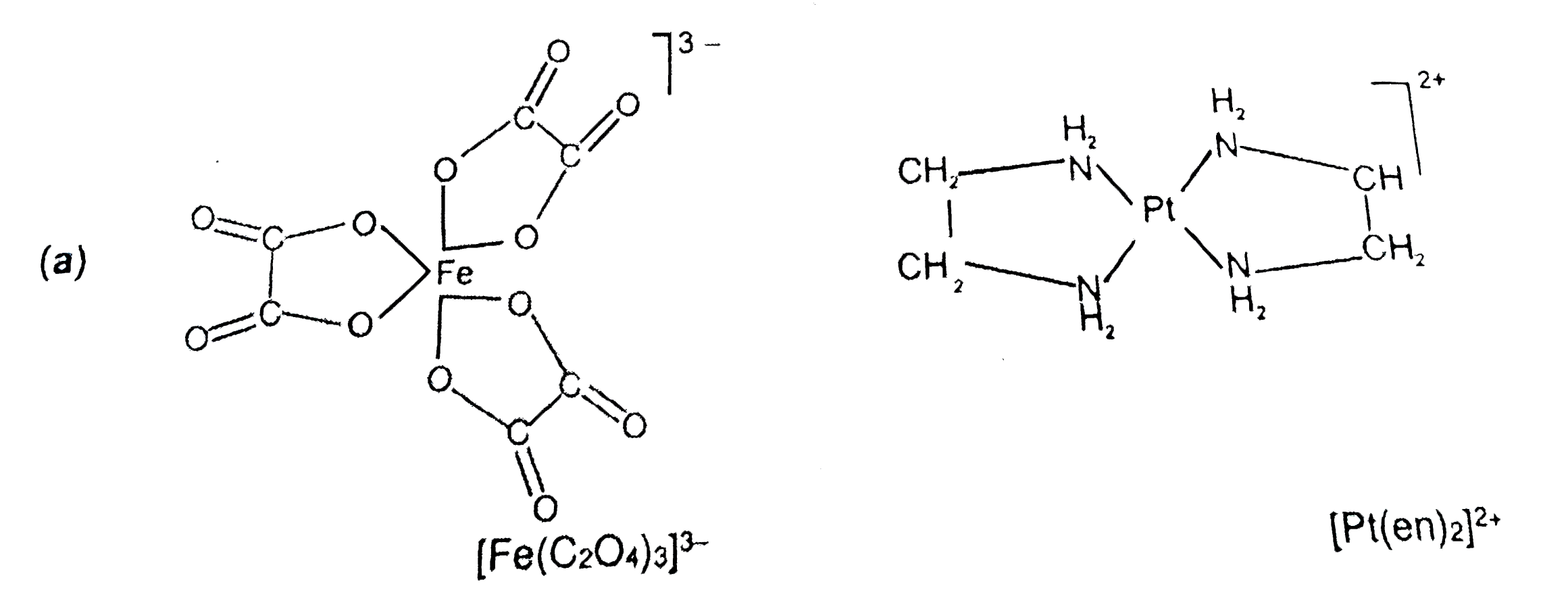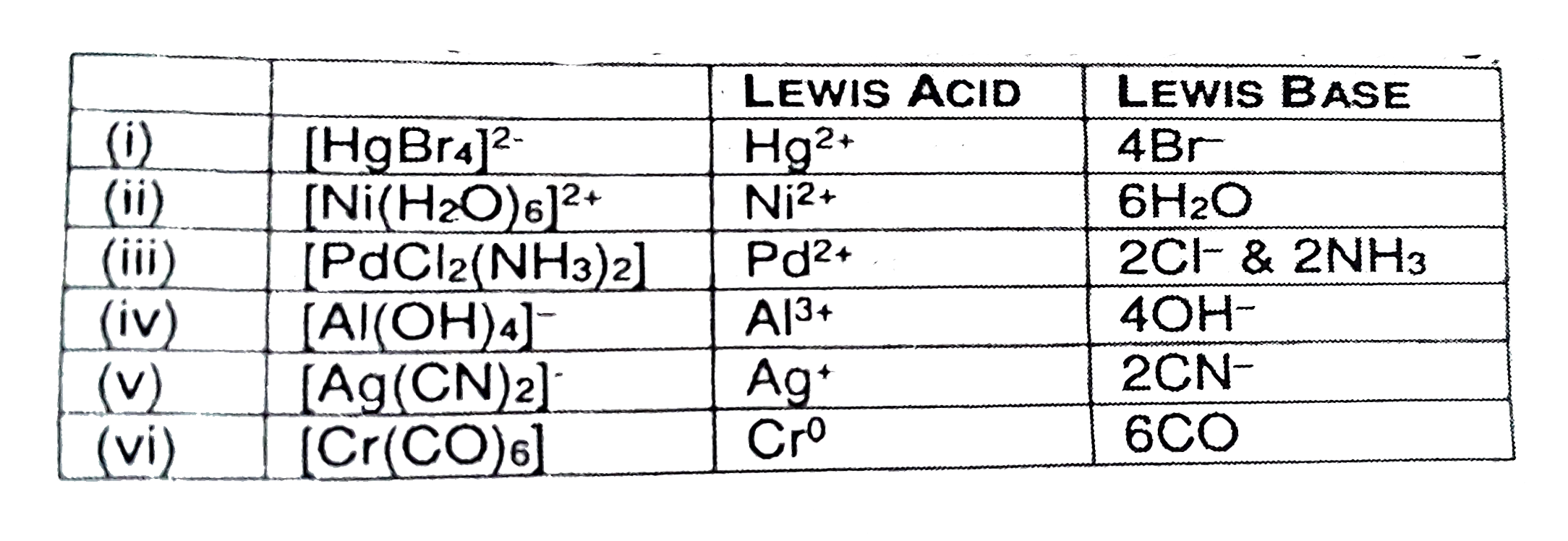InterviewSolution
Saved Bookmarks
| 1. |
(a) Determine the denticity of the ligands in complexes [Fe(C_(2)O_(4))_(3)]^(3-) and [Pt(en)_(2)]^(2+). What are the coordination number and the oxidation number of the central metal ion ? (b) Designate the coordination entities and counter ions in the coordination compounds. K_(2)[Ni(CN)_(4)],[Cr(en)_(3)]Cl_(3),F_(4)[Fe(CN)_(6)]_(3),[PtCl_(2)(en)_(2)](NO_(3))_(2). ( c) Identify the Lewis acid and Lewis base components of the following complexes. (i)[HgBr_(4)]^(2-)"" (i) [Ni(H_(2)O)_(6)]^(2+)"" (iii) [PdCl_(2)(NH_(3))_(2)] (iv) [Al(OH)_(4)]^(-)""(v) [Ag(CN)_(2)]^(-) "" (vi) [Cr(CO)_(6)] |
Answer» Solution : The ligands, oxalate and ethylenediamine are bidentate as ech ligand has two donor ATOMS. So in 1st case the number of chelate rings (five membered ) are three where as in 2nd case the number of chelate rings (five membered ) are two. The coordination number and oxidation stae of IRON are six and +3 respectively and the coordination number and oxidation state of platinum are four +2 respectively. ( b)`K_(2)[Ni(CN)_(4)]overset(aq)iff2K^(+)(aq)+[Ni(CN)_(4)]^(2-)(aq)` `[CR(en)_(3)]Cl_(3) overset(aq)IFF[Cr(en)_(3)]^(3+)(aq)+3Cl^(-)(aq)` `Fe_(4)[FE(CN)_(6)]_(3) overset(aq)iff4Fe^(3+)(aq)+3[Fe(CN)_(6)]^(4-)(aq)` `[PtCl_(2)(en)_(2)](NO_(3))_(2) overset(aq)iff[PtCl_(2)(en)_(2)]^(2+)(aq)+2(NO_(3))^(-)(aq)` So, `[Ni(CN)_(4)]^(2-),[Cr(en)_(3)]^(3+),3[Fe(CN)_(6)]^(4-) and [PtCl_(2)(en)_(2)]^(2+)` are coordination entities and `K^(+),Cl^(-), Fe^(3+) and NO_(3)^(-)` are counter ions. ( c) Coordination compounds are acid-base adduct. Cations are electron deficient, therefore, are called Lewis acids where as ligands are electrons donor, therefore, are called as Lewis base. 
|
|